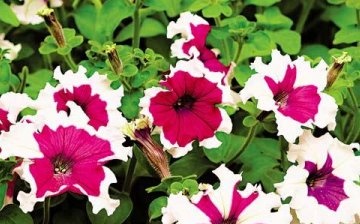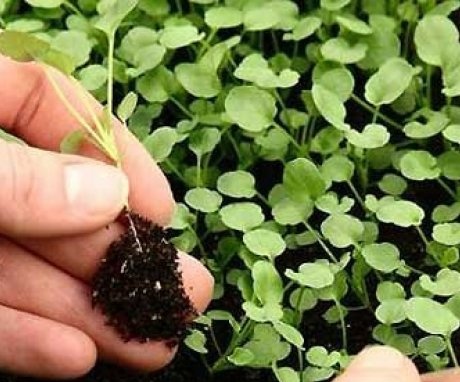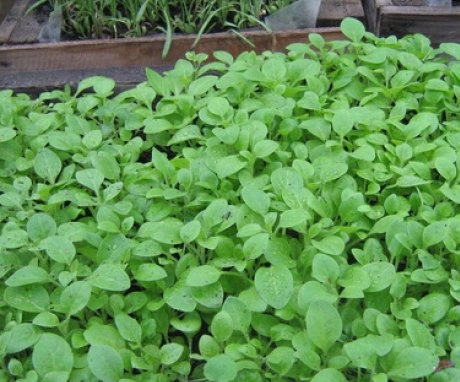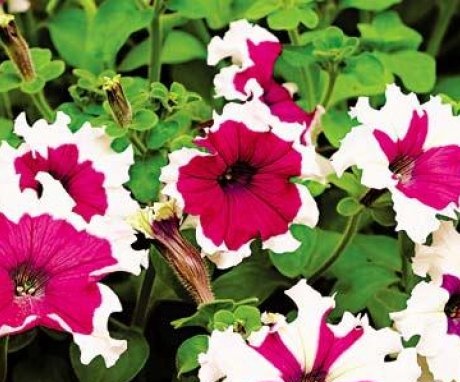How to plant petunia correctly
Petunia is an amazingly beautiful plant that adorns plots, balconies and window sills. Gardeners love her for the fact that she blooms for almost the entire season. Petunia flowers begin to bloom in May and delight with their splendor until October. This is an unpretentious flower that grows easily at home. A huge variety of varieties from common to terry and ampelous, possessing a unique color and aroma, can satisfy the taste of even the most sophisticated gardener.
Content:
Growing seedlings
This unique plant is grown mainly in seedlings. Most people prefer to purchase ready-made seedlings, but you can grow them yourself. The seeds of this flower do not germinate well, so the choice of land must be approached responsibly. Soil for sowing seeds should be nutritious, well-drained and neutral. It is great if it is a mixture of sod land, well-rotted humus, river sand and peat.
In the container, which is intended for seedlings, it is necessary to make holes at the bottom so that excess water does not stagnate and cause rotting of the root system. Place a drainage layer on the bottom of the pots or drawer and fill them with sifted earth. The earth needs to be moistened and compacted a little.
Now you can sow petunia seeds, after mixing them with fine sand. It is not worth deepening into the ground, it is enough just to scatter over the surface, spray with water and cover with a layer of soil 2-3 mm. The sown seeds must be covered with plastic wrap, paper or glass until the first leaves appear.
The soil should always be moist, to do this, moisten it twice a day at regular intervals. Petunia seedlings will feel comfortable with good lighting and an air temperature of + 22-24 degrees. In such conditions, the first shoots will appear in 10 days.
The first shoots are still very weak, so do not remove the film immediately. Let them gain strength a little. And until the real leaves appear, you should carefully remove condensation from the film and ventilate the plants. You can sprinkle some wood ash around the stem. Such care will save them from black leg disease and allow them to quickly adapt to environmental conditions.
A week after planting the seeds, you can apply the first nitrogen and potash fertilizers. Next feeding seedlings in 2 weeks.
Landing in open ground
The grown seedlings of petunias are planted in open ground when warm sunny weather sets in, the soil warms up well and frosts are no longer expected. This is usually mid-May. Landing begins with choosing a site on the site. Petunia prefers sunny areas. You can plant it in a sunny flowerbed or complement it with a flower-stone composition.
An area with loose and damp soil is ideal. Before planting, the land must be fed with any fertilizer for flowering plants. You can use 20-30 grams of nitrophosphate per 1 meter of area.
Seedlings are planted at a distance of about half a meter between plants. It is advisable to plant in the morning or after sunset, so that the scorching rays of the sun do not injure delicate seedlings. Each bush under the root is plentifully watered with warm water and mulched with sawdust.
If you decide to immediately plant petunia seeds in open ground, then first, be sure to dig up the ground and feed it with complex fertilizers. Mix the seeds with fine sand and sow in the ground. Thoroughly moisten crops with the watering can spray nozzle. In warm weather, the first shoots will appear in 8-10 days.
Unpretentious petunia does not need frequent watering or any special care. It is enough to water it abundantly once a week and apply complex mineral fertilizers once every 2 weeks. Petunia does not like stagnant water, so make sure there is good drainage.
Reproduction of petunia
At home, the petunia that you especially like can be preserved and propagated. Reproduction of this flower occurs by cuttings. The plant grown in this way is no different from the mother bush and begins to bloom 2-3 weeks earlier than those grown from seed.
The bush that you have chosen for reproduction must be transplanted into a pot in August, and with the onset of cold weather, cut it off, leaving no more than 15 cm, and bring it into the house. Such a flower pot is stored in cool conditions at a temperature of no more than +12 degrees and watered moderately so as not to provoke flowering. Observing these conditions, you can get good cuttings.
Plant propagation is best done in spring. Lateral basal shoots no more than 9 cm long are ideal cuttings. The lower leaves are removed from them, the upper ones are cut in half. The ends of the cuttings must be treated with a growth stimulant and planted in cups with soil.
When propagating by cuttings of petunias, it is very important to plant them as quickly as possible. Already an hour after cutting, they will not be able to take root. Caring for them is similar to caring for seedlings.
Whichever way you are grew petunia, it will become a real decoration of your garden. This is a real find for gardeners. Its bright flowers with an extraordinary aroma will become an integral attribute of any flower bed, balcony or window sill.













